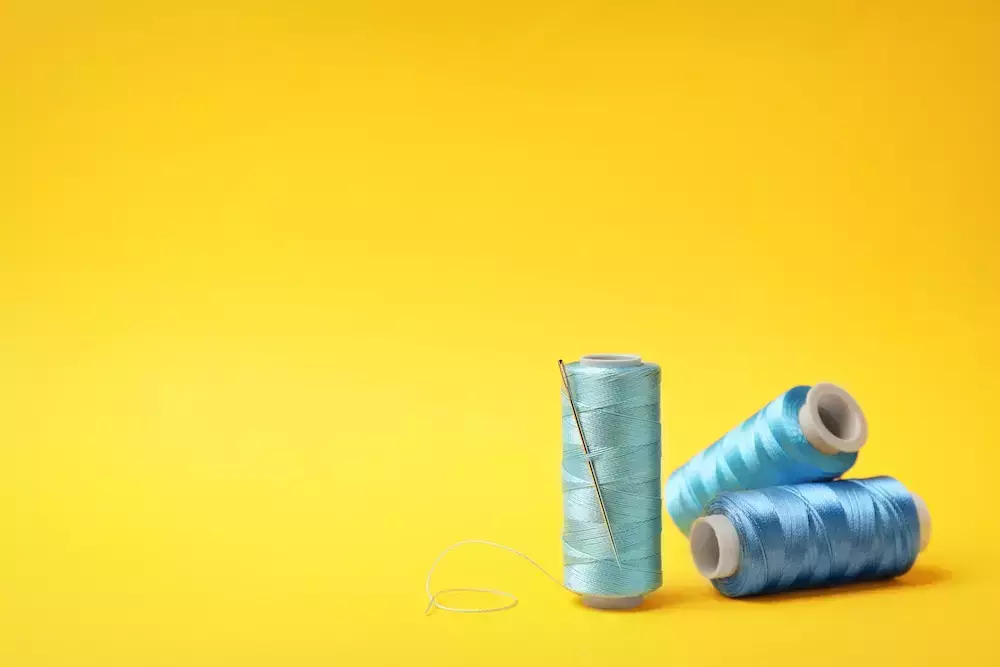Should You Use a Sewing Machine if You Don't Have a Bobbin?
2021-04-20
Wouldn't it be wonderful if sewing machines didn't have a ton of tiny pieces? They're dangerous puzzles with pointy bits and moving gears that can pinch the skin. Thankfully many of those tiny pieces sit tucked away and out of sight, like your bobbin.
The bobbin carries out a key function that you need to create anything from a hand warmer to a wedding dress. A bobbin secures the threading and locks the stitch by using two thread-sources. Trying to use a sewing machine without a bobbin is like trying to eat with chopsticks with only one chopstick. You can poke around, but you might just have to use your hand.
Can you operate the machine without a bobbin?
No, and there are good reasons why! We'll get to that in a moment.
The Trouble with Bobbins
Every lockstitch sewing machine uses a bobbin. Nearly every machine you'll come across easily will rely on a bobbin to create tight and effective stitches. Even a basic zig-zag stitch requires a bobbin.
All bobbins are tiny, but it's not well-known that there are many different sizes. Experienced sewers are even surprised to learn that bobbins come in various materials such as wood in addition to metal and plastic.
There are times that a machine may not have a bobbin, but those are exclusively chain stitch sewing machines. These machines sew differently because they use a single top thread that loops over itself and creates a chain.
Chainstitch machines aren't common, so effectively, you can't use your sewing machine without a bobbin. But, what would happen if you tried?
Bobbins Gone Missing
If you have lost or broken your bobbin, then your machine won't actually do much more than pierce the fabric. This issue happens because your top thread isn't looping through anything when it passed through the fabric. The needle will pierce the fabric, and the thread will pull right out as the needle moves.
The only silver lining of this is that running the machine without the bobbin doesn't actually put your machine at risk. It's not like trying to make the machine run through a cluster of thick fabric with a needle made for standard weight work.
Common Bobbin-Related Questions
A handful of questions come up with bobbins and when you should use them or when you might not need them. We already covered that unless you have a chain stitch machine, you will always need a bobbin, but it is worth exploring why these questions come up and giving direct answers.
Is a bobbin necessary for embroidery?
This question actually dives into some of the deep mysteries of the super fancy machines we're using nowadays. Sewing machines now have so many stitches that even expert sewers need to bust out the manual to read over before selecting the right decorative stitch or embroidery setting.
With embroidery, you absolutely need a bobbin, just like with any other regular stitch, the bobbin uses a lower thread to secure the stitches into place. Embroidery with a bobbin does offer some unique elements, such as less bulk on the back of the fabric than you might have with hand-stitched embroidery.
Is there a right or wrong bobbin?
Yes. There are "general" bobbins, but using the wrong bobbin cause really takes a toll on your machine. We mentioned earlier that bobbins could come in different shapes and materials. It is always best to match your bobbin and sewing machine. Reference your manual to be certain that you're using the right size and the right kind of material.
What is the difference between a top-loading or front-loading bobbin?
Most new sewing machines use top-loading bobbin cases, but the old hands of the craft have probably come across a front-loading bobbin case. It is the exact same idea as top and front-loading dryers or washers.
Top-loading bobbin cases are the more modern option, and sewists like that can easily see their bobbin as they sew. Front-loaders are detachable and are going out of style.
How can I be sure I'm winding my bobbin correctly?
Have you ever gotten through a stretch of sewing and realized that there's a heap of thread? That's because the bobbin wasn't wound properly. Your manual will show you the right way to wind your bobbin for your machine, and your work will quickly let you know if it was done correctly or not.
Is there really another thread tension?
Yes, there is a bobbin thread tension, and it's even more finicky than the top-thread tension. Take the end of the lower thread on the wound bobbin and give it a gentle shake. Did it move? How far?
If the bobbin didn't budge, then the tension is too high, and you need to loosen it. If the thread unwound quickly, then it's too low.
Are rusty bobbins really a thing?
Yes, rusty bobbins can damage your machine and many projects along the way. If you have rusty bobbins, toss them out. But, if they look like they could still come down the path of redemption, then oil them up a bit and be sure to keep your bobbins and the bobbin case clean!
My bobbins bulge a little, is that bad?
Bulging bobbins can make it impossible to even put the bobbin into place. It can also slow down the bottom thread and cause mechanical troubles for your machine.
Happy Bobbins!
Unless you have a chain stitch machine, then you will certainly need your bobbin, even for specialty stitches like embroidery settings or securing a zipper into place. Always consult your manual for the right type, materials, and sometimes brand of the bobbin. Please contact us if you have any remaining questions about bobbins!





